 Much of America’s prosperity is thanks to our long history of public investments in education. Early in our nation’s history we recognized that education was the key to our social and economic future. Publicly-funded colleges were created before the American Revolution and were expanded with federal assistance in the 19th century. Public schools were invented in the United States; a wave of immigration and the desire for all people to have greater economic opportunities demanded that children of every background and social status have access to a free, public education. In Oklahoma and most other states, public education became a constitutional right. Article 13 of Oklahoma’s Constitution declares: “The Legislature shall establish and maintain a system of free public schools wherein all the children of the State may be educated.”
Much of America’s prosperity is thanks to our long history of public investments in education. Early in our nation’s history we recognized that education was the key to our social and economic future. Publicly-funded colleges were created before the American Revolution and were expanded with federal assistance in the 19th century. Public schools were invented in the United States; a wave of immigration and the desire for all people to have greater economic opportunities demanded that children of every background and social status have access to a free, public education. In Oklahoma and most other states, public education became a constitutional right. Article 13 of Oklahoma’s Constitution declares: “The Legislature shall establish and maintain a system of free public schools wherein all the children of the State may be educated.”
#1: Education is the key to prosperity across the states
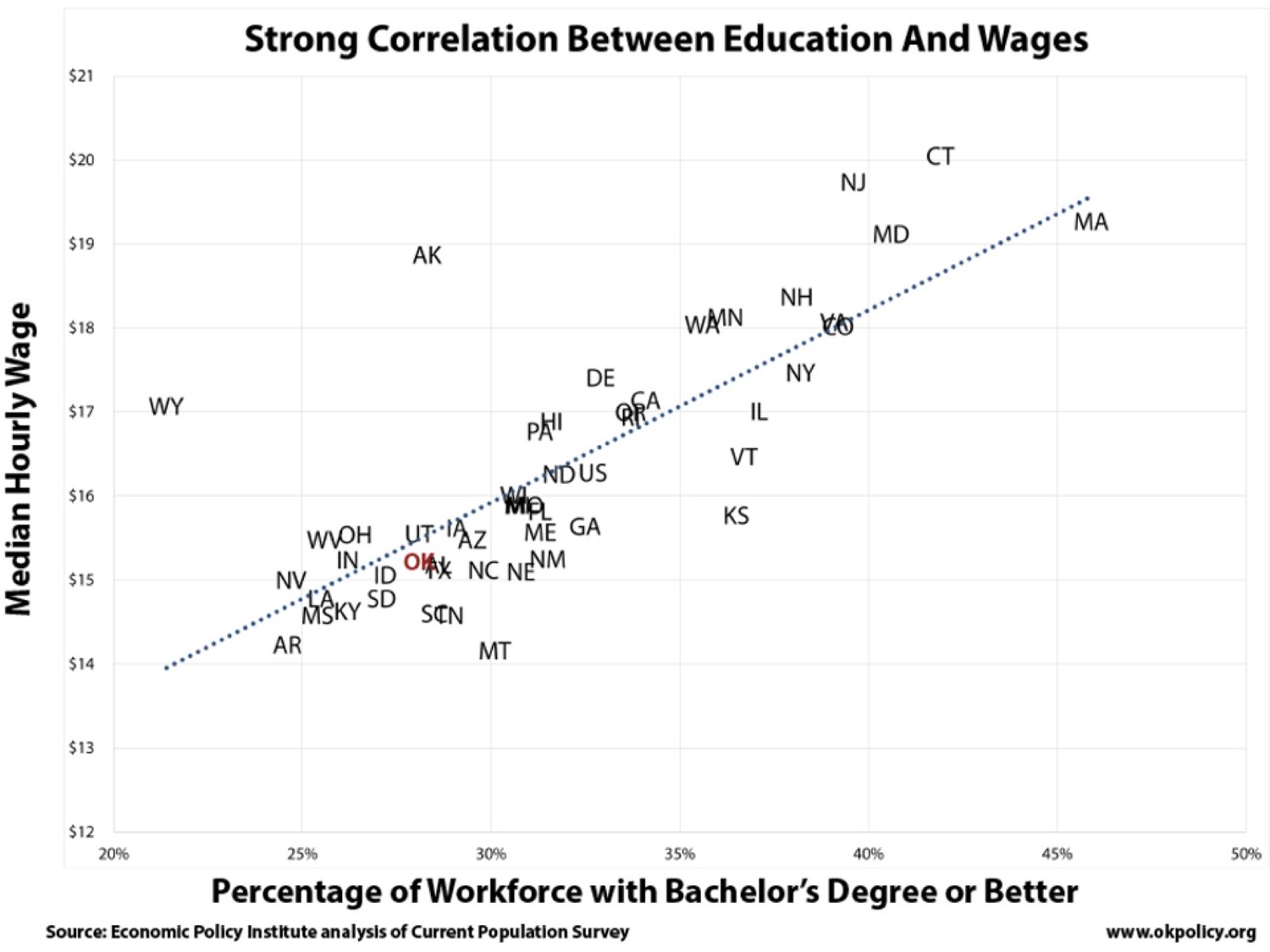
With few exceptions, the states where workers earn the highest wages are the states with the most college graduates, while states with the lowest median wages are those with the fewest college graduates. Unfortunately, Oklahoma ranks relatively low both for educational attainment and wages. Just 30.9 percent of Oklahomans age 25 and older have a college degree (Associate, Bachelors, or post-graduate), well below the national rate of 37.2 percent.
#2: Education is the largest part of the state appropriations budget
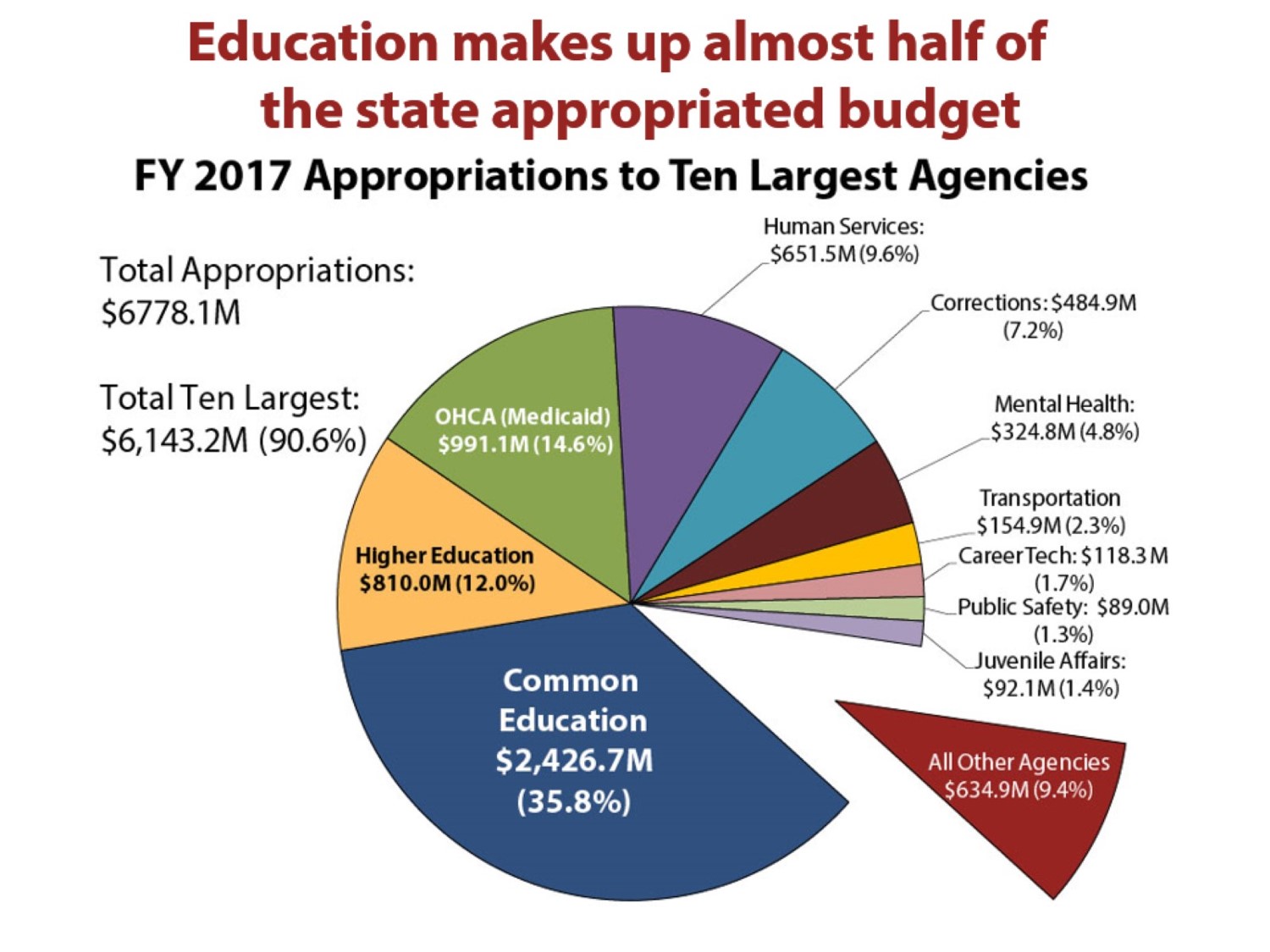
The State Department of Education received more than one-third (35.8 percent) of total state appropriations in FY 2017. Higher education received 12 percent, and together they made up almost half of all state appropriations.
#3: Most state K-12 education funding goes directly to local districts
Of the agency’s total FY 2017 appropriation of $2.427 billion, 77.1 percent ($1.870 billion) takes the form of state aid funding that goes directly to local school districts. This state aid is distributed through a complex formula that considers the number of students and factors like poverty levels, English-language learners, and the need for transportation and special education services that make educating some students more costly.
#4: Local schools are very dependent on state funding
State appropriations was 51 percent of all Oklahoma school funding in FY 2014, and other state revenues made up 11 percent of school funding. The rest came from property taxes and other local funding (28 percent) and federal funds (10 percent). Since 2001 the state share of all education costs has fallen from 59 to 51 percent, and the local share has risen from 22 to 29 percent. However, Oklahoma schools are still more dependent on state funding compared to schools in most other states because of Oklahoma’s very low property taxes and strict limits on how much property taxes can be increased locally.
#5: Oklahoma has made the deepest cuts in the nation to per pupil state aid funding in recent years
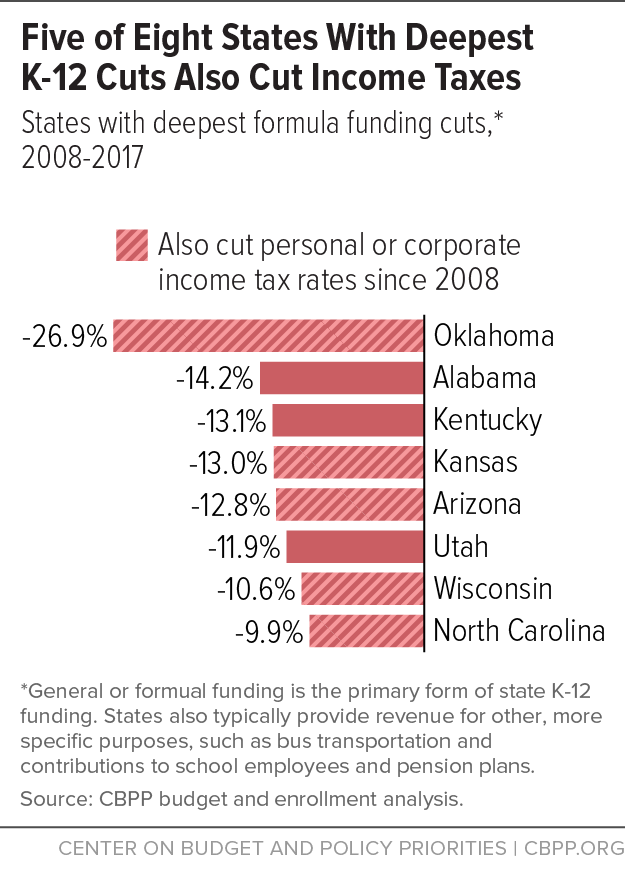
A majority of states that made the deepest cuts to their school funding formulas in recent years have cut personal or corporate income tax rates over those same years. Oklahoma’s per pupil funding of the state aid formula for public schools has fallen 26.9 percent after inflation between FY 2008 and FY 2017. These continue to be the deepest cuts in the nation, and Oklahoma’s lead is growing.
#6: Oklahoma teacher pay is lowest in our region and near the lowest in the nation
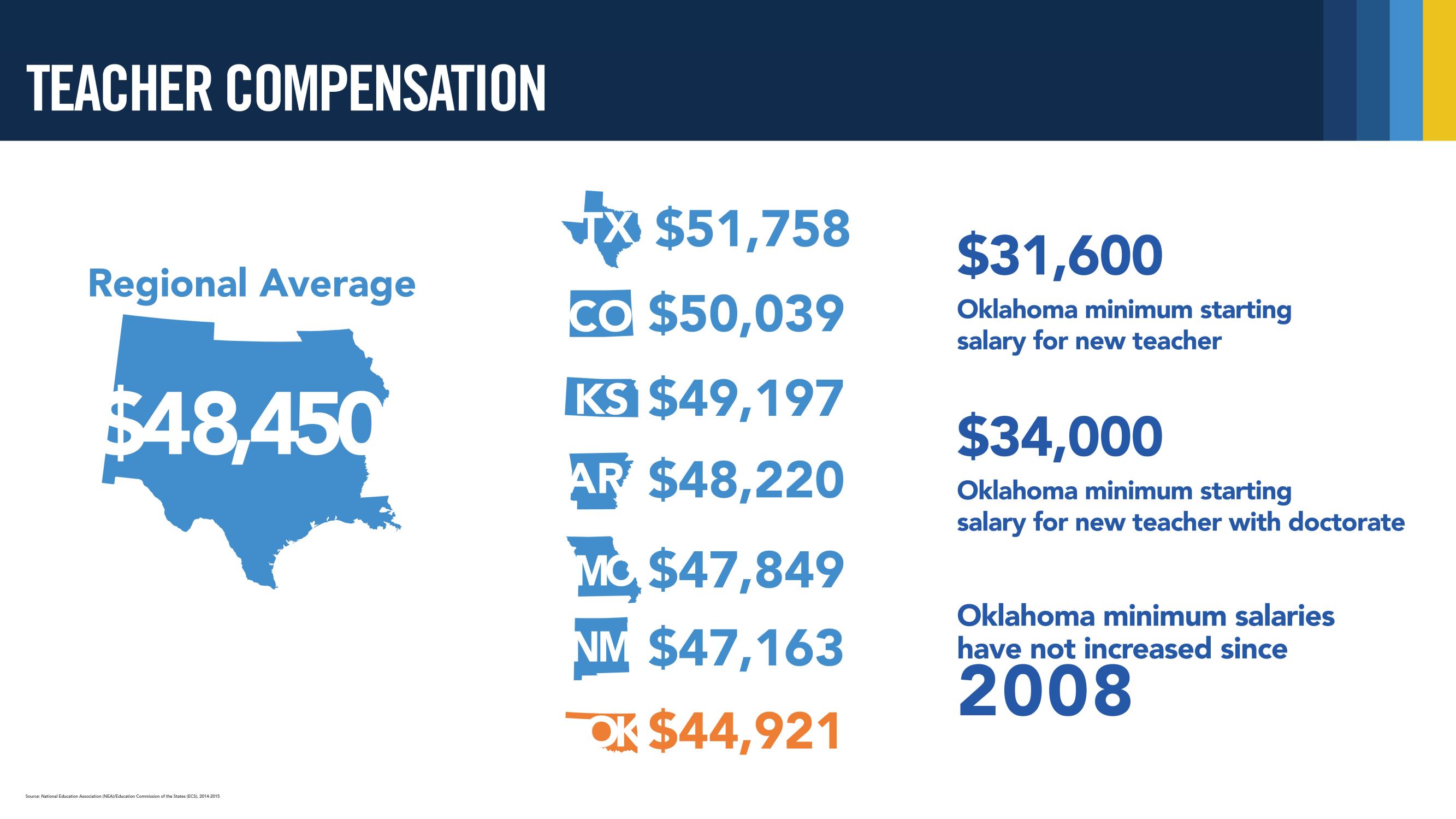
In the 2015-16 school year, Oklahoma’s average teacher salary and benefits were third lowest in the nation, ahead of only South Dakota and Mississippi. South Dakota has since passed a plan to improve teacher compensation and will likely surpass Oklahoma. Oklahoma has struggled to keep experienced teachers in the classroom with compensation below all of our neighboring states and well below what those with similar education levels as teachers can earn in other professions.
#7: The lottery helps some, but Oklahoma has lost more education funding to tax cuts than we gained from the lottery
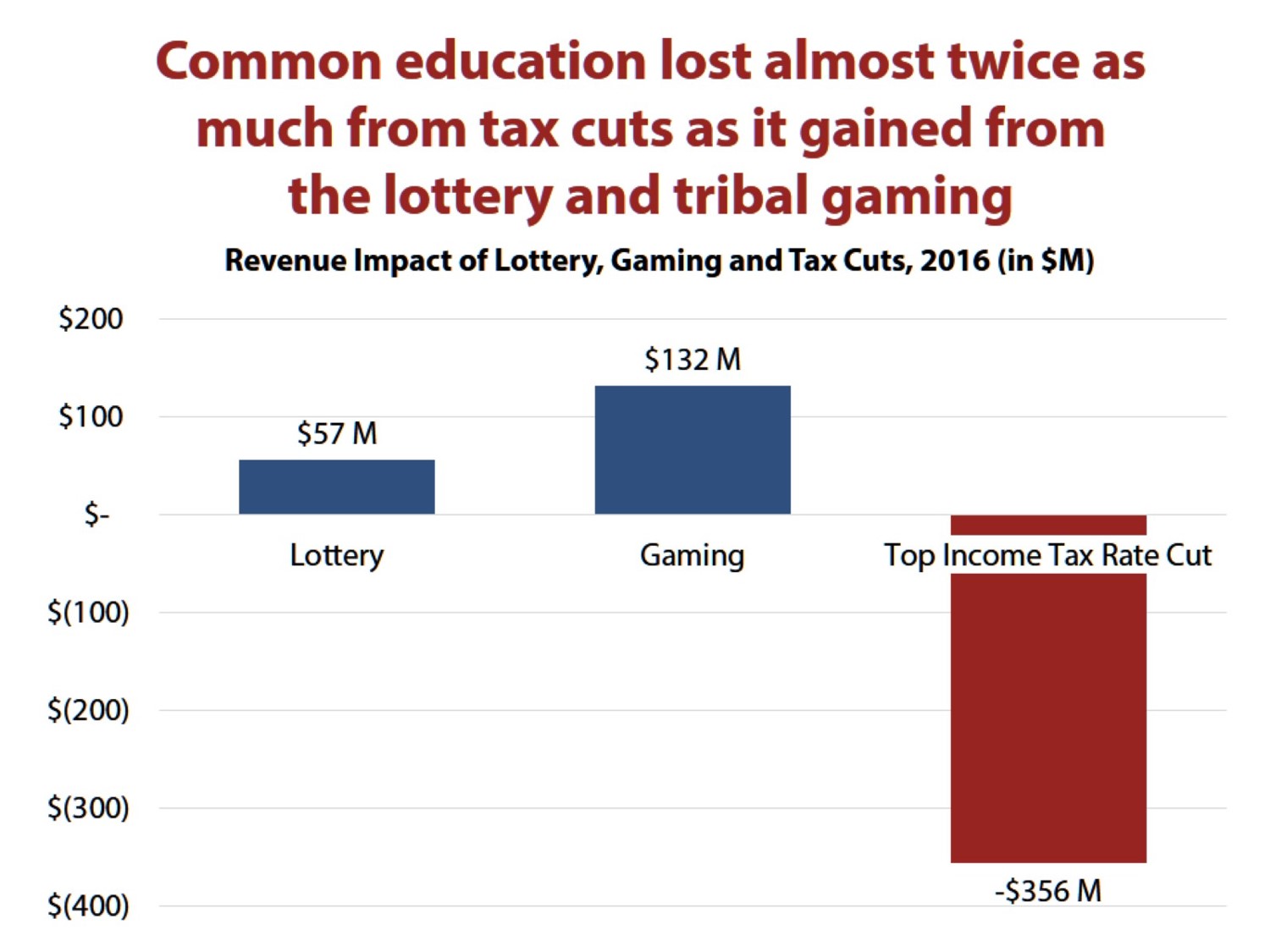
The contribution of the lottery to the Oklahoma Education Lottery Trust Fund has been steady since 2006 at about $70 million per year, though it has started to decline recently due to greater competition from tribal gaming. The contribution of the lottery and tribal gaming are barely half of what K-12 education has lost due to cuts to the state’s top income tax rate, according to analysis by Oklahoma Policy Institute.
#8: A large majority of Oklahoma school spending goes directly to services for students and support for teachers
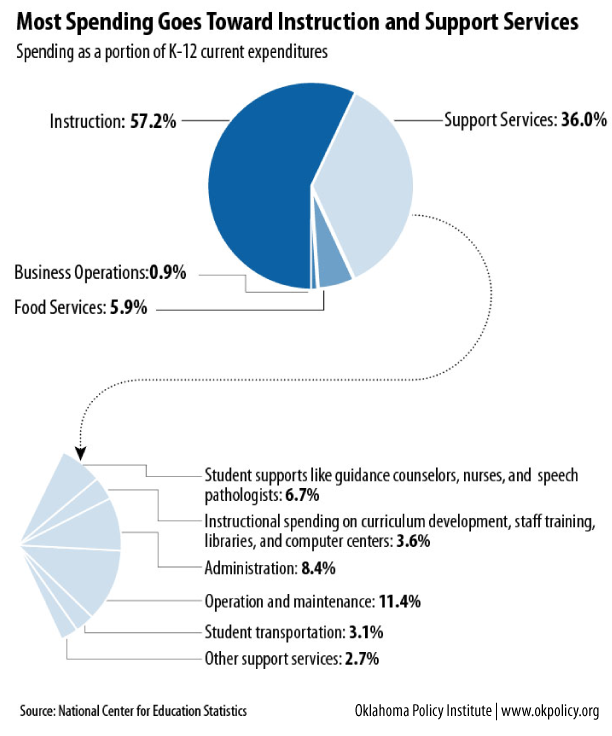
Oklahoma has the 48th lowest per pupil expenditures out of all 50 states and the District of Columbia. For most categories of expenditure, the picture is the same. We spend the 48th smallest amount for instruction and school-level administration. We rank slightly higher (44th) for spending on support services, which includes counselors, nurses, librarians, teacher training, and curriculum development. The data shows that we do put a disproportionate amount into superintendents’ offices. The $252 per student spent on district-level administration is 23rd highest in the nation, but even if we managed to spend nothing on district administration and put all of that into instruction spending, it wouldn’t be enough to change our ranking for spending on instruction by even one state.






